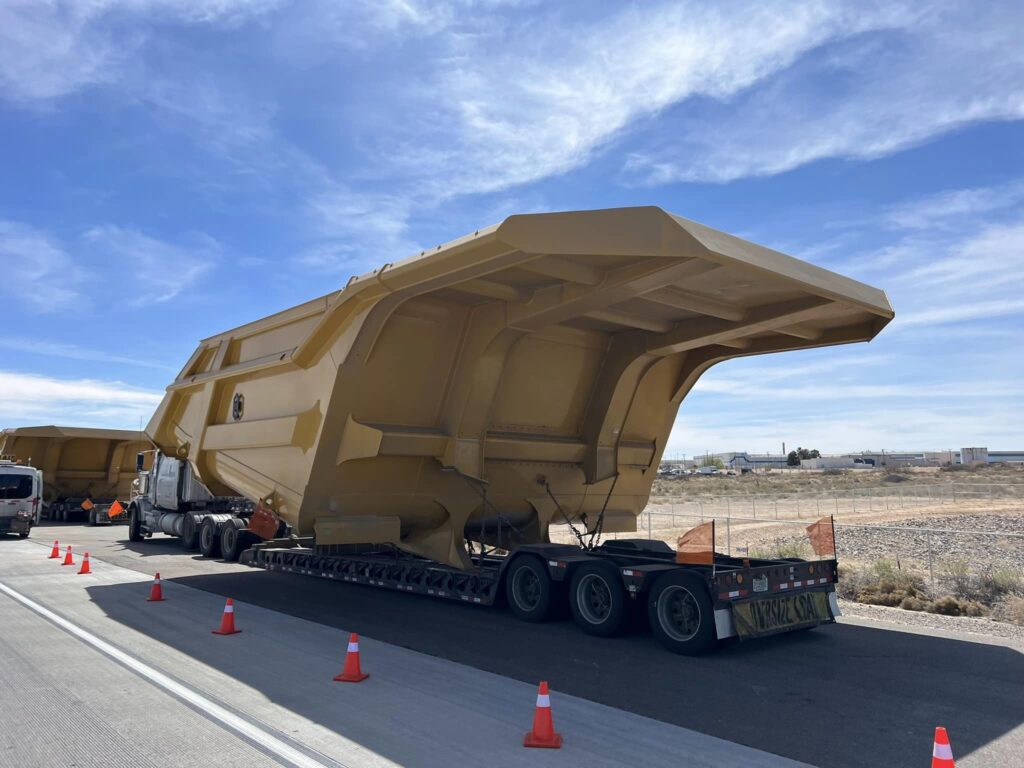
In working environments, safety is the responsibility of every person that works for a company. Good safety practices enable an organization to avoid injuries, damage to equipment and inventories lost downtime, and potential legal consequences. As one anonymous author stated, “Working safely may get old, but so do those who practice it.”
For those in the transportation industry, safety is a high priority. Indeed, safety is the highest priority of the Department of Transportation, or DOT, and its related departments.
As in other aspects of life, transportation safety is anchored in the details. Moving equipment safely means loading, securing, and unloading it properly. Failure to do these things can result in damage to equipment and property, personal injury, violation fines, and the cost of out-of-service machinery.
The Federal Motor Carrier Safety Administration, or FMCSA, was established within the Department of Transportation, DOT, with its primary mission being to prevent commercial vehicle-related injuries and fatalities.
DOT/FMCSA rules apply to the movement and transportation of heavy vehicles and machinery that operate on wheels or tracks. Included are front-end loaders, tractors, power shovels, and bulldozers, each of which weighs more than 10,000 lb.
Lighter vehicles and machinery use the same safety principles for securing cargo.
FMCSA has established performance requirements that define the acceleration and deceleration rates of a vehicle which the cargo securement systems must be able to withstand. All systems, parts, and vehicle structures used to secure cargo must be in good working condition.
The regulation for hauling heavy equipment rules require that vehicular cargo must be restrained and tied down using a minimum of four tie-downs, each having a working load limit of at least 5,000 lb. The tie-downs must be attached at either the front and rear of a vehicle load or at the mounting points on the vehicle.
Tiedowns must be secured in a way that prevents them from becoming loose or unfastened in transit. In addition, edge protection must be in place if the tiedown would potentially be harmed by abrasion or cutting.

All cargo is required to be solidly secured or immobilized and cargo items that may be likely to roll have to be restrained by using chocks, wedges, a cradle or equivalent means.
Any articles placed next to one another must be placed in direct contact and secured or prevented from shifting toward each other in transit and secure.
There are working load limits for all cargo amounting to at least one-half of the weight of the article or group of articles to be secured. In addition, there is a requirement for a minimum number of tie-downs for articles. Articles that are 5 feet or less and less than 1,100 lbs. in weight require one tie-down.
Articles greater than 5 feet but less than 10 feet regardless of weight require two tie-downs. Articles longer than 10 feet require two tie-downs for the first 10 feet and one additional tie-down for every 10 feet or fraction beyond the first 10 feet. All articles must be blocked, braced, and immobilized to prevent forward rearward or lateral movement.
Item-specific DOT regulations for hauling heavy equipment have been established for hauling the following types of cargo:

Load securement may seem simple to outsiders at first glance but there is a lot to this important safety practice. Securement systems include vehicle floors, walls, decks, anchor tiedown points, stakes, posts, headboards, and more. Securement devices include chains, ropes, steel strapping, synthetic webbing, blocking, binders, shackles, and winches.
The keys to safety are:
Use this best practices checklist to ensure the positive and safe outcome that every operator and freight company desires.

Moving and hauling heavy equipment and freight is not a simple thing. To achieve safety, it is important to plan, follow securement of the DOT regulations for hauling heavy equipment, and always operate your vehicle according to posted highway speeds and operating procedures. Master safety by mastering the details.
Contact the transportation experts at Osage Specialized Transport with offices in Denver, CO, and McKinney, TX. We are your go-to heavy haul and specialized equipment trucking company. We work closely with numerous large carriers, energy sector companies, and heavy equipment-related businesses.
We have over 40 years of experience in the industry, allowing us to provide a broader base of varied heavy equipment hauling than any single company has access to.
[…] Know the regulations. Cargo securement standards represent the minimum safety requirements for general cargo and some specific commodities. […]
[…] and exceeds industry requirements. Drivers are selected based on strict guidelines and must meet U.S. Department of Transportation safety regulations as well as stringent DD&S Express […]
[…] Load carefully: When you get to the seller’s location to pick up your backhoe, you’ll want to make sure you know how to load it for safe backhoe hauling in Denver, CO. To attach it to a flatbed, you’ll want to remove the pin from the bucket and lower it. Then, use several chains or ratchet straps to hold down the machinery and ensure it doesn’t move about. It’s important to check with your state’s Department of Transportation to ensure you’re compliant with its rules and regulations. […]